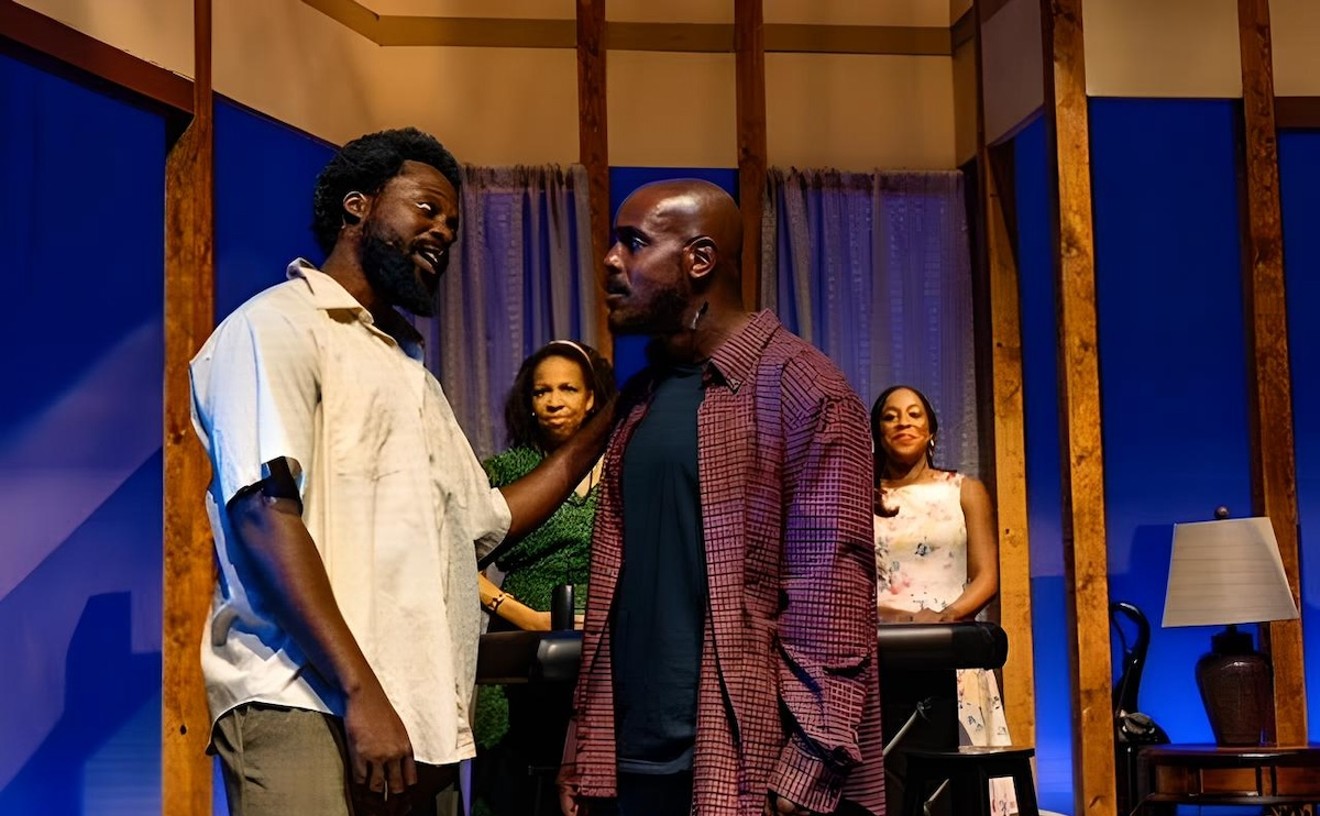For a project informally titled Art v. Irma, executive director Lorie Mertes and artist Phillip Karp repurposed leftover wood panels from Under Water, an installation exhibited at the gallery this past spring, and used them as hurricane shutters. As storm panic swept over Miamians, Mertes says she became creative and found strength in community. She and her staff traded extra plywood from Under Water with the in-demand T
“Locust is scrappy and resourceful... it’s that artist-community mentality. It’s lovely how everyone comes together and makes it happen,” Mertes says.
Under Water, an installation by David Kennedy Cutler, Michael DeLucia, and David Scanavino, commented on environmental and cultural decay through digital manipulation. The artists had printed plywood with patterns of chipboard and Dentyne Ice packages, making an illusion of garbage in
A few weeks later, Irma was headed toward Miami, and plywood was suddenly in short supply. The irony of the title Under Water was not lost on Mertes and the Locust community, who hoped the words weren't a portent.
But even as the hurricane barreled toward Miami and survival mentality kicked in, Mertes drew on the power of art. “I had Phillip [Karp] put the plywood up, and he was going to do it with the artwork facing in. I told him to turn it around so we can see the art... Everything is about creative expression. Even shutters can be artistic. It was about how to add some levity to the situation,” she says.
Thankfully, Locust Projects’ storefront space in the Design District, wedged between high-end furniture shops, was unscathed by the storm. The organization had closed its doors
Locust artists remained busy during the hurricane. Miami-based artist Franky Cruz’s
As a result of the storm, Locust Projects has rescheduled the opening reception for the fall exhibitions to Wednesday, September 27. The fall projects include Cruz’s
Of Stephan’s "Cement Houses," Mertes says, “Florida wouldn’t exist without concrete. But now, with the water woes and how much of our land is covered and filled with concrete, [it] no longer allows the water to go into the earth where it's supposed to go. What we created the dream with here has caused some of the environmental problems.”
Because the works were chosen as the result of an open call, Mertes, who became executive director of Locust Projects this past May, says the themes of the environment and politics were not intentional. However, as a result of a decade-long museum career in Washington, D.C., she is happy to have the works together to begin a conversation about these topics in Miami. She says facetiously, “Here we were, building walls!”
Locust Projects' Fall Exhibition Reception. 7 to 9 p.m. Wednesday, September 27, at Locust Projects, 3852 N. Miami Ave., Miami; 305-576-8570; locustprojects.org. Admission is free.














